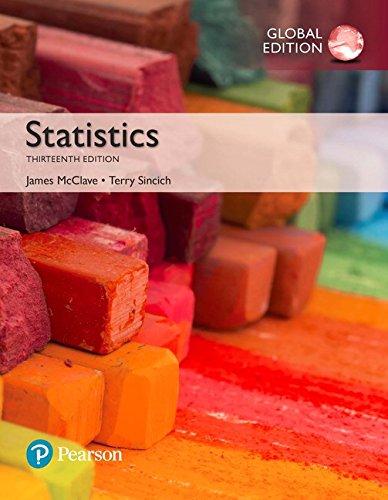Visual search and memory study. In searching for an item (e.g., a roadside traffic sign, a lost
Question:
Visual search and memory study. In searching for an item
(e.g., a roadside traffic sign, a lost earring, or a tumor in a mammogram), common sense dictates that you will not reexamine items previously rejected. However, researchers at Harvard Medical School found that a visual search has no memory (Nature, Aug. 6, 1998). In their experiment, nine subjects searched for the letter “T” mixed among several letters “L.” Each subject conducted the search under two conditions: random and static. In the random condition, the locations of the letters were changed every 111 milliseconds; in the static condition, LO5 the locations of the letters remained unchanged. In each trial, the reaction time in milliseconds (i.e., the amount of time it took the subject to locate the target letter) was recorded.
a. One goal of the research was to compare the mean reaction times of subjects in the two experimental conditions.
Explain why the data should be analyzed as a paired difference experiment.
b. If a visual search has no memory, then the main reaction times in the two conditions will not differ.
Specify H0 and Ha for testing the “no-memory”
theory.
c. The test statistic was calculated as t = 1.52 with p@value = .15. Draw the appropriate conclusion.
Step by Step Answer:





